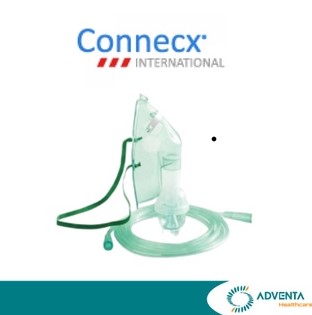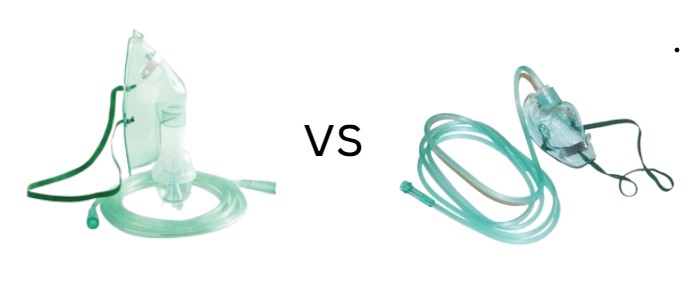What is the difference between oxygen mask and nebulizer mask?
In medicine, a nebulizer mask is a drug delivery device used to deliver drugs in the form of atomized inhalation into the lungs. Nebulizer masks are commonly used to treat respiratory illnesses or conditions such as asthma, cystic fibrosis, and chronic obstructive pulmonary disease. They use oxygen, compressed air or ultrasound to break down the solution and suspension into small droplets of aerosols that are then inhaled directly from the device’s mouthpiece. Aerosols are mixtures of gases and solid or liquid particles. He following article shall tell you more about nebulizer masks.
What are the uses of nebulizer masks?

Recent evidence suggests that nebulizer masks are no more effective than dosing inhalers (MDIs) with spacers. Spaced MDI may help children with acute asthma. These findings refer specifically to the treatment of asthma, not to the efficacy of aerosol sprays, such as COPD, in general. There is no evidence that MDI delivery is more effective than nebulizer mask delivery for COPD, especially when assessing exacerbation or pulmonary disease onset.
The European respiratory society highlights a risk associated with the reproducibility of droplet size, caused by the sale of atomized solutions separately from atomized devices. They found that droplet sizes could be changed 10 times or more by moving from an inefficient atomizer system to a more efficient one. Compared to MDIs with spacers (inhalers), nebulizer masks have the advantage of delivering larger doses at a faster rate, especially in patients with acute asthma. However, recent data suggest that actual lung deposition rates are the same. In addition, another trial found that the required dose for the clinical effect of MDI (using a spacer) was lower than that of a nebulizer mask.
In addition to chronic lung disease, sprays can also be used to treat acute problems, such as inhaling toxic substances.
Can nebulizer be used without mask?
How long can a nebulizer mask be used?
This means they are not intended for long-term use. In fact, most disposable nebulizer masks are meant to be thrown away after 5 to 7 uses. Reusable adult and child nebulizer masks, on the other hand, are made to last up to 6 months. It is important to replace your mask regularly.
What are the differences between nebulizer masks and oxygen masks?
As you can see from the two definitions of the phrases, an oxygen mask is a mask that patients wear over their nose and their mouth so that oxygen can be supplied to them from a storage tank. Whereas for a nebulizer mask, it is used to open up the airways in the lungs when asthmatic occurs. That is to say, nebulizer masks can deliver medication quickly and easily to your lungs to help you breathe better and cure the illness in your lungs. Thus, it is often used with medication, apart from the oxygen mask, which isn’t accompanied by medication most of the time.
To sum up, patients may look for a silent nebulizer mask whereas others may prefer an ultrasonic one. Ultrasonic ones work best with thin, light medications because they use ultrasonic vibrations to aerosolize the patient’s medications, which is the case of most patients. Thus, after understanding the differences between an oxygen mask and a nebulizer mask, you should know what kind of mask suits you best. For more information of choosing nebulizer masks, contact us and get a more detailed description of our products.

